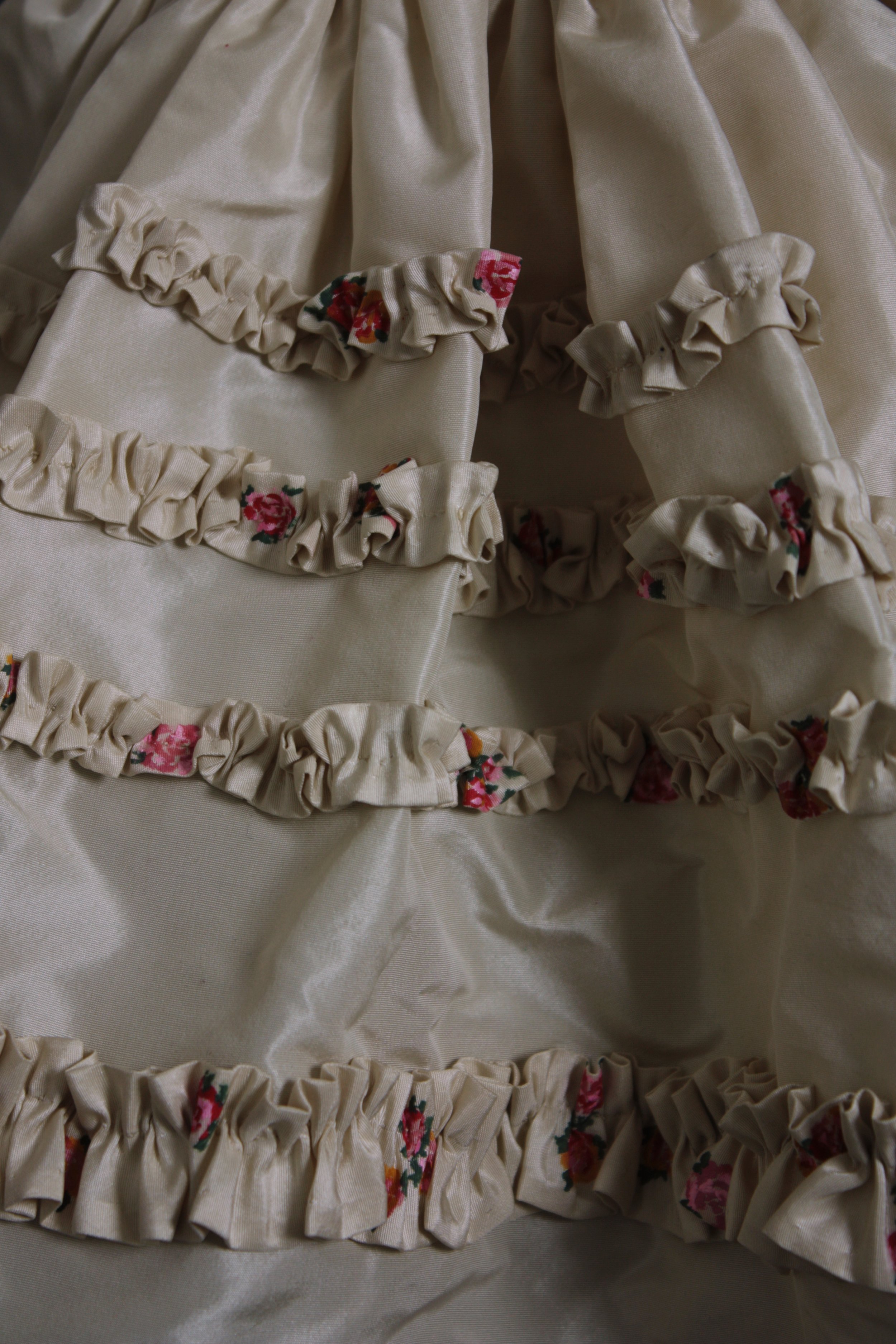
Fragmented petticoat
Fragmented petticoat
By Julia Belser
This petticoat is inspired by a fragment of a wedding bodice from 1765. Reflecting the original cream coloured silk and with painted flowers to resemble the bodice’s embroidery, the petticoat is imagined as a piece that might have accompanied the original on the bride’s wedding day. This garment has been made sustainably by using scrap fabric and discarded thread and by using piecing, a technique also found on the bodice.
Close-up showing the hand painted flowers on the bodice
Piecing is the sewing of two smaller lengths of fabric together to make a larger length from which pattern pieces can be cut (The Quilt Show, 2021). Although it creates seams in odd places, in the past even the wealthiest of people would use piecing to conserve expensive fabric. According to the note left by a relative, the bodice had cost the bride one guinea per yard, that’s about £140 today - many yards would have been used for the complete dress.
Today this technique is not used in commercial clothing production. A clothing manufacturer can waste kilos of fabric to avoid a misplaced seam, sending all the unused bits to the landfill - 92 tonnes are dumped globally each year (Beall, 2021). We must remember that there is nothing wrong with an extra seam, much like how there is nothing wrong with a slight bruise on a supermarket apple. Imagine how much could be saved if we used piecing on our garments today! Not only is it a sustainable practice in saving these scraps of fabric, but it is cost effective and creates a finished garment that tells your unique story.
Detail of original bodice. Two irregular pieces sewn together to make the full bodice, making use of even the smallest scraps of this expensive fabric
Beall, A. (2021). Why clothes are so hard to recycle [online]. Available from: https://www.bbc.com/future/article/20200710-why-clothes-are-so-hard-to-recycle
The Quilt Show (2021). What are Marking Tools? [online]. Available from: https://thequiltshow.com/quiltipedia/what-is-piecing









